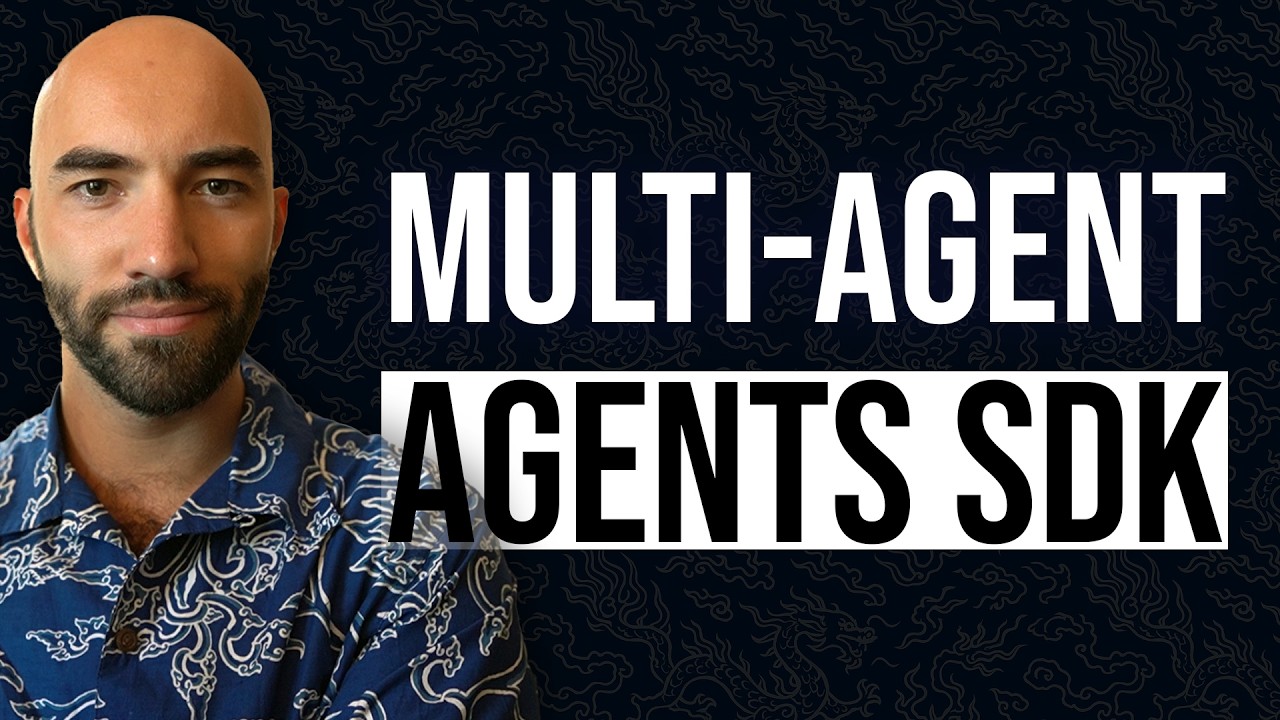The video offers a detailed tutorial on implementing multi-agent workflows using OpenAI’s Agents SDK, focusing on the orchestrator sub-agent pattern that manages specialized sub-agents like web search, document retrieval, and code execution. It demonstrates how to set up, integrate, and coordinate these agents to handle complex queries effectively, while discussing the benefits, limitations, and best practices for optimizing such multi-agent systems.
The video provides a comprehensive tutorial on implementing multi-agent workflows using OpenAI’s Agents SDK, focusing specifically on the orchestrator sub-agent pattern. The SDK, which evolved from the open-source Swarm project, simplifies working with multiple agents by allowing developers to create a main orchestrator agent that manages various sub-agents. These sub-agents act as specialized tools, such as web search, internal document retrieval, and code execution agents, which the orchestrator can invoke as needed to handle complex queries more effectively.
The tutorial begins by setting up the environment, including obtaining and configuring API keys for external tools like LinkUp for web searches. It then demonstrates how to build individual sub-agents: a web search agent that queries external sources, an internal documents agent that retrieves private company data, and a code execution agent that performs calculations. Each sub-agent is designed to perform specific tasks, with instructions on how they should behave and how to format their responses, often emphasizing markdown for clarity and readability.
Next, the video explains how to integrate these sub-agents into an orchestrator agent by converting them into tools. The orchestrator is configured with a prompt that provides context about its role, including instructions to avoid revealing the multi-agent nature to users, thus maintaining a seamless conversational experience. The orchestrator can then decide dynamically which sub-agents to invoke based on user queries, coordinating multiple tools to generate comprehensive responses while managing the flow of information efficiently.
The presenter demonstrates practical examples, such as querying about revenue reports and current financial data, showing how the orchestrator intelligently chooses between internal documents and web search tools. Traces and logs from the OpenAI platform are used to analyze the workflow, revealing how the orchestrator makes decisions, how long each step takes, and where potential improvements could be made. Adjustments to prompts and instructions are suggested to improve accuracy and response speed, especially in distinguishing between internal and external information sources.
Finally, the video discusses the advantages and limitations of the orchestrator sub-agent pattern. While it offers flexibility and modularity, it can introduce latency due to multiple language model calls, which may be inefficient for simple tasks. The presenter emphasizes that this pattern is most beneficial when multiple specialized sub-agents are necessary, or when responses need to be highly contextual and accurate. Overall, the tutorial provides a detailed guide for building sophisticated multi-agent systems with OpenAI’s SDK, highlighting best practices, debugging techniques, and considerations for optimizing performance.
